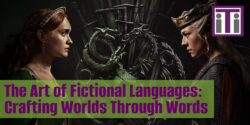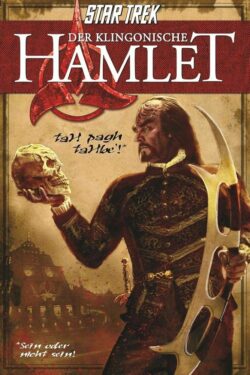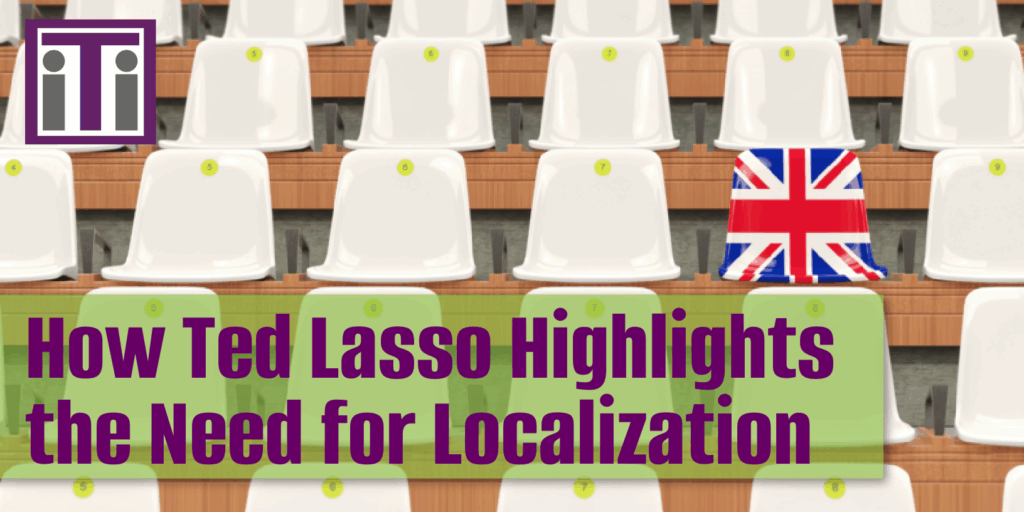The Art of Fictional Languages: Crafting Worlds Through Words
Reading Time: ~7 mins

In the realm of storytelling, the creation of fully developed fictional languages has become an art form, captivating audiences and adding depth to the worlds we love. From the intricate Elvish tongues of Tolkien’s Middle-earth to the commanding Klingon of “Star Trek,” these languages offer a unique layer of immersion. One of the most fascinating examples is High Valyrian, the ancient and noble language featured in “House of the Dragon.” Crafted by skilled linguists, High Valyrian not only enriches the narrative but also invites fans to explore a linguistic heritage as rich and complex as the story itself.
As if learning a “real” language isn’t challenging enough, these fictional languages have become so mainstream that universities such as UC Berkley and the University of Texas at Austin offer accredited courses in their study, with the goal of providing students with a deeper understanding of linguistic principles.
In this blog post, we look into the magic behind these constructed languages, exploring how they are meticulously developed and the impact they have on both the fictional worlds and their audiences. Join us as we uncover the secrets of High Valyrian and other iconic languages that have transcended the screen and page to become cultural phenomena.
The Linguistic Tapestry of George R.R. Martin’s World
George R.R. Martin’s “A Song of Ice and Fire” series, along with its television adaptation “Game of Thrones,” features a rich array of fictional languages that add depth and authenticity to the diverse cultures of Westeros and beyond. According to the Wiki of Westeros, the interpreter Missandei speaks nineteen languages, although only a handful are included in Martin’s books and the subsequent series. Among these, High Valyrian stands out as a particularly significant and revered language. Created by linguist David J. Peterson, High Valyrian is the ancient tongue of the Valyrian Freehold, spoken by the Targaryens and other noble families. Its elegant and melodic structure reflects the sophistication and grandeur of its speakers, making it a central element in the lore of “House of the Dragon.”
In addition to High Valyrian, Peterson also developed other languages for the series, such as Dothraki and various dialects of Low Valyrian, spoken in the Free Cities. These languages are meticulously crafted to reflect the unique cultures and histories of their speakers, enhancing the immersive experience for fans. The inclusion of these languages in both the books and the television series demonstrates the power of linguistic creativity in bringing fictional worlds to life, allowing audiences to connect more deeply with the characters and their stories.
Check out this video in which Peterson discusses the languages he created and gives some lessons on grammar and pronunciation:
The Wild Spirit of Dothraki
Dothraki, the language of the nomadic horse riders in “Game of Thrones,” is another remarkable example of a fully developed fictional language. Created by linguist David J. Peterson, Dothraki was designed to reflect the harsh and untamed nature of its speakers. With its unique phonetic structure and vocabulary, Dothraki adds a layer of authenticity to the Dothraki culture, making their world feel more real and immersive for viewers.
The development of Dothraki involved careful consideration of the cultural and environmental context of the Dothraki people. Peterson crafted a language that not only sounds distinct but also aligns with the lifestyle and values of the Dothraki. This attention to detail has inspired fans to learn and use Dothraki, further demonstrating the impact of well-constructed languages in enhancing the storytelling experience.
The Elegance of Elvish
The Elvish languages, particularly Quenya and Sindarin, are among the most celebrated fictional languages, crafted by J.R.R. Tolkien for his Middle-earth legendarium. Tolkien, a philologist and professor of Anglo-Saxon at Oxford, brought his extensive linguistic knowledge to bear in creating these languages. His deep understanding of historical languages and their evolution allowed him to develop Elvish tongues that are not only linguistically rich but also culturally resonant within the context of his stories.
Tolkien’s Elvish languages are more than just a means of communication; they are woven into the very fabric of Middle-earth’s culture and history. He wrote numerous poems and songs in Quenya and Sindarin, adding a lyrical and poetic dimension to his works. These compositions, such as the hauntingly beautiful “Namárië” in Quenya, showcase the musicality and depth of the Elvish languages, enhancing the immersive experience for readers. Tolkien’s meticulous attention to linguistic detail has inspired countless fans to study and even speak Elvish, further cementing his legacy as a master world-builder and linguist.
The Intricacies of Klingon
Klingon, the fierce and guttural language of the warrior race from “Star Trek,” stands as one of the most iconic constructed languages in popular culture. Developed by linguist Marc Okrand, Klingon is not just a collection of random sounds but a fully functional language with its own grammar, syntax, and vocabulary. Its creation was driven by the need to provide authenticity and depth to the Klingon characters, making their interactions and culture more believable and immersive for the audience. Some language service companies even include Klingon translation among their services!
 What sets Klingon apart is its dedicated fanbase, which has embraced the language beyond the screen. Enthusiasts can learn Klingon through various resources, including dictionaries, language courses, and even Shakespearean translations. This level of engagement highlights the power of fictional languages to transcend their original context, fostering a unique community of speakers and learners who celebrate the linguistic creativity of the “Star Trek” universe.
What sets Klingon apart is its dedicated fanbase, which has embraced the language beyond the screen. Enthusiasts can learn Klingon through various resources, including dictionaries, language courses, and even Shakespearean translations. This level of engagement highlights the power of fictional languages to transcend their original context, fostering a unique community of speakers and learners who celebrate the linguistic creativity of the “Star Trek” universe.
The Harmony of Na’vi
Na’vi, the language spoken by the indigenous people of Pandora in James Cameron’s “Avatar,” is a testament to the power of linguistic creativity in film. Developed by linguist Dr. Paul Frommer, Na’vi was designed to be both alien and relatable, with a phonetic structure that is pleasing to the human ear while still feeling otherworldly. The language’s unique sounds and grammatical rules help to create a rich cultural backdrop for the Na’vi people, enhancing the immersive experience of the film.
Dr. Frommer’s creation of Na’vi involved extensive research and a deep understanding of linguistic principles, resulting in a language that fans can learn and use. The popularity of Na’vi has led to the development of learning resources, including online courses like LearnNavi.org and dictionaries, allowing enthusiasts to explore the world of Pandora more deeply. This engagement underscores the significant role that well-crafted fictional languages play in building compelling and believable fictional worlds
And There are More:
While not as popular or complex as the languages mentioned earlier in this article, we found a few more examples that should not be overlooked:
- Huttese. Used in the Star Wars universe, particularly by Jabba the Hutt. It was created by sound designer Ben Burtt and is based on the Quechua language.
- Minionese. The language spoken by the Minions in the Despicable Me movies. It was created by co-director Pierre Coffin and incorporates elements from various languages, including Spanish, French, and Japanese.
- Nadsat. The slang language used in Anthony Burgess’s novel A Clockwork Orange. It combines English with Russian and other influences.
- Simlish. The fictional language used in The Sims video game series. It was created by game developers and is a mix of various languages and gibberish.
The creation of fictional languages is a testament to the boundless creativity and dedication of linguists and storytellers. These languages not only enrich the narratives they are part of but also offer fans a deeper connection to the worlds they love. From the ancient elegance of High Valyrian to the wild spirit of Dothraki, and from the poetic beauty of Elvish to the fierce intensity of Klingon, each language adds a unique layer of authenticity and immersion. As these languages continue to captivate audiences and inspire academic study, they remind us of the profound impact that well-crafted linguistic artistry can have on storytelling and cultural engagement.
| Talk to an Expert |
Interpreters and Translators, Inc. is a full-service language solutions company based in Glastonbury, Connecticut. iTi is an NMSDC-certified minority owned business.





